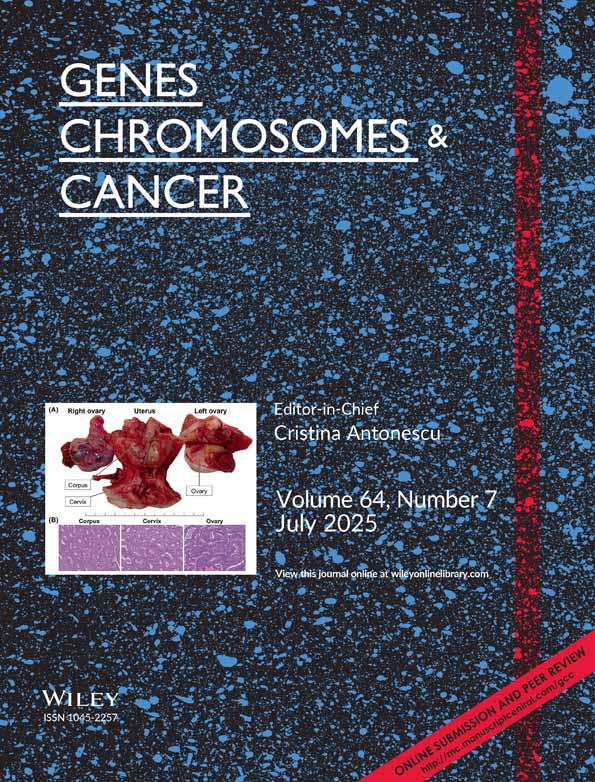ZFY gene expression and retention in human prostate adenocarcinoma
Abstract
The terminal portion of the short arm of the human Y (Yp) chromosome encodes a zinc-finger DNA binding protein (ZFY). A highly homologous gene, ZFX, is encoded on Xp. The potential of the zinc finger motif for regulating the expression of other genes suggests a role for this protein in the development of malignancy. Prostate adenocarcinoma is a malignancy of malespecific tissue, the incidence of which increases beyond the fifth decade of life. We have analyzed samples of human prostate adenocarcinoma for the expression of ZFY and ZFX transcripts. We found expression of ZFY transcripts in 3 of 31 prostate adenocarcinomas by using Northern analysis. No ZFY or ZFX transcripts were detected in normal hypertrophic prostate tissue on Northern analysis. In one prostate adenocarcinoma, high levels of the 5.1 kb ZFY and the 8.0 and 6.3 kb ZFX transcripts were present. In addition, this high-grade tumor contained a novel 4.3 kb transcript. When we used reverse transcriptase PCR (RT-PCR) to analyze these same samples, the number of tumors expressing ZFY and/or ZFX transcripts increased to 20 of 31. Transcripts for these genes were also present in the DU-145 and LNCaP human prostate adenocarcinoma cell lines. In 2 of the 6 benine prostatic hypertrophy (BPH) tissues analyzed by RT-PCR, barely detectable products of ZFY were observed, and none contained ZFX products. Southern analysis revealed that the portion of the Y chromosome which contains the ZFY gene was not lost from the majority of the tumor cells in any of the prostate malignancies examined. Our results demonstrate that ZFY and ZFX genes can become transcriptionally active in human tumors. We suggest that one possible outcome of this expression is the potential deregulation of other important growth control genes which could contribute to prostate malignancy. © 1993 Wiley-Liss, Inc.




